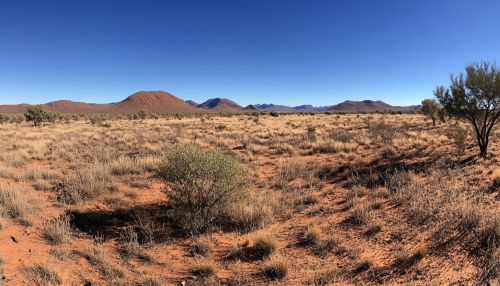Fray Marcos de Niza: Difference between revisions
(Created page with "== Early Life and Background == Fray Marcos de Niza was a Franciscan friar born around 1495 in Nice, which was part of the Duchy of Savoy at the time. His early life remains largely undocumented, but it is known that he joined the Franciscan Order, which was renowned for its missionary zeal and commitment to poverty and simplicity. The Franciscans were instrumental in the Spanish colonization of the Americas, often accompanying conquistadors to evangelize indigenous pop...") |
No edit summary |
||
| Line 35: | Line 35: | ||
* [[Francisco Vázquez de Coronado]] | * [[Francisco Vázquez de Coronado]] | ||
[[Image:Detail-99421.jpg|thumb|center|A panoramic view of a desert landscape with sparse vegetation and distant mountains under a clear blue sky.|class=only_on_mobile]] | |||
[[Image:Detail-99422.jpg|thumb|center|A panoramic view of a desert landscape with sparse vegetation and distant mountains under a clear blue sky.|class=only_on_desktop]] | |||
[[Category:Spanish Explorers]] | [[Category:Spanish Explorers]] | ||
[[Category:Franciscan Missionaries]] | [[Category:Franciscan Missionaries]] | ||
[[Category:16th-Century Explorers]] | [[Category:16th-Century Explorers]] | ||
Latest revision as of 23:16, 29 October 2024
Early Life and Background
Fray Marcos de Niza was a Franciscan friar born around 1495 in Nice, which was part of the Duchy of Savoy at the time. His early life remains largely undocumented, but it is known that he joined the Franciscan Order, which was renowned for its missionary zeal and commitment to poverty and simplicity. The Franciscans were instrumental in the Spanish colonization of the Americas, often accompanying conquistadors to evangelize indigenous populations.
Journey to the New World
In 1531, Fray Marcos de Niza arrived in the New World, initially landing in the Spanish colony of Peru. His arrival coincided with the height of Spanish exploration and conquest in the Americas. The Spanish Crown was eager to expand its territories and convert indigenous peoples to Christianity, and missionaries like Fray Marcos played a crucial role in this endeavor. He soon moved to New Spain, present-day Mexico, where he became involved in missionary work and exploration.
Expedition to the North
In 1539, Fray Marcos de Niza was chosen to lead an expedition northward from Mexico. The expedition was commissioned by Antonio de Mendoza, the Viceroy of New Spain, who was eager to explore the lands rumored to be rich in gold and other resources. This journey was partly inspired by the tales of Álvar Núñez Cabeza de Vaca, who had wandered through the region and reported on the existence of wealthy indigenous cities.
Fray Marcos was accompanied by Estevanico, an African slave who had previously traveled with Cabeza de Vaca. Estevanico was a skilled linguist and played a vital role in communicating with the indigenous peoples they encountered. The expedition aimed to locate the legendary Seven Cities of Cibola, which were believed to be fabulously wealthy.
The Discovery of Cibola
Fray Marcos de Niza's journey took him through the harsh deserts of what is now the southwestern United States. He traveled through present-day Arizona and New Mexico, documenting the landscapes and peoples he encountered. In his report to the Viceroy, Fray Marcos claimed to have seen one of the Seven Cities of Cibola from a distance, describing it as a city with great wealth and large buildings.
His report, however, was met with skepticism by some contemporaries. Critics argued that Fray Marcos had exaggerated his findings to gain favor with the Spanish authorities. Despite the doubts, his account spurred further expeditions, most notably the one led by Francisco Vázquez de Coronado, who sought to verify Fray Marcos's claims.
Controversy and Legacy
The subsequent expedition by Coronado revealed that the cities Fray Marcos described were not as wealthy as he had claimed. The supposed city of Cibola turned out to be a modest Zuni pueblo. This led to accusations that Fray Marcos had fabricated his report. Some historians suggest that he might have been misled by Estevanico or that he misunderstood the indigenous peoples' descriptions.
Despite the controversy, Fray Marcos de Niza's expedition was significant in the history of Spanish exploration in North America. It opened up new territories for further exploration and colonization. His journey also contributed to the broader narrative of the Spanish quest for wealth and the spread of Christianity in the New World.
Later Years and Death
After the expedition, Fray Marcos de Niza continued his missionary work in Mexico. He remained a respected figure within the Franciscan Order, although his reputation among explorers was tarnished by the Cibola controversy. He died in Mexico City in 1558, leaving behind a complex legacy as both an explorer and a missionary.
See Also


